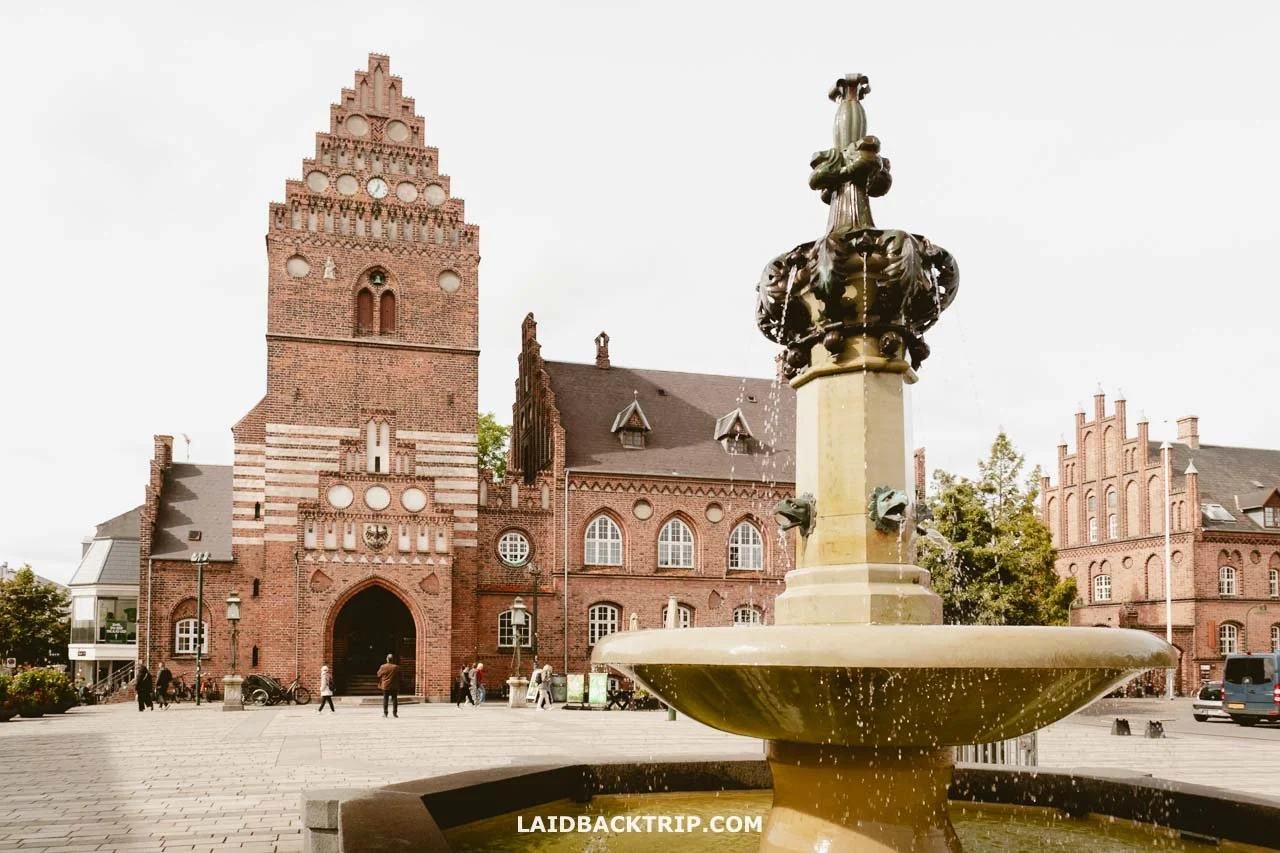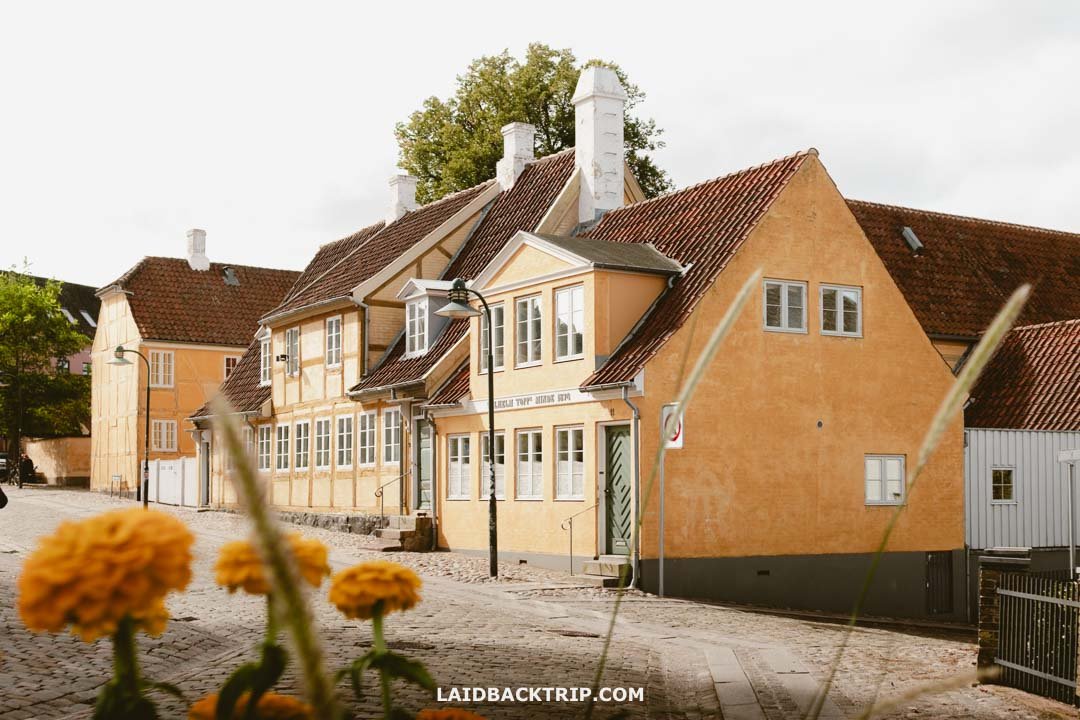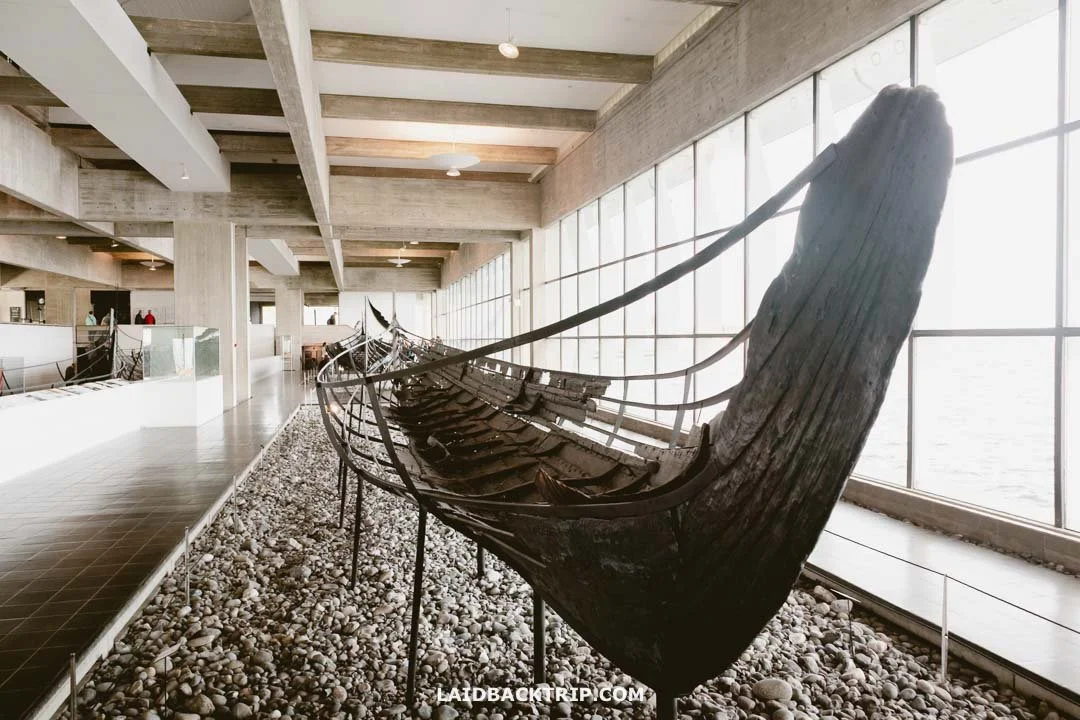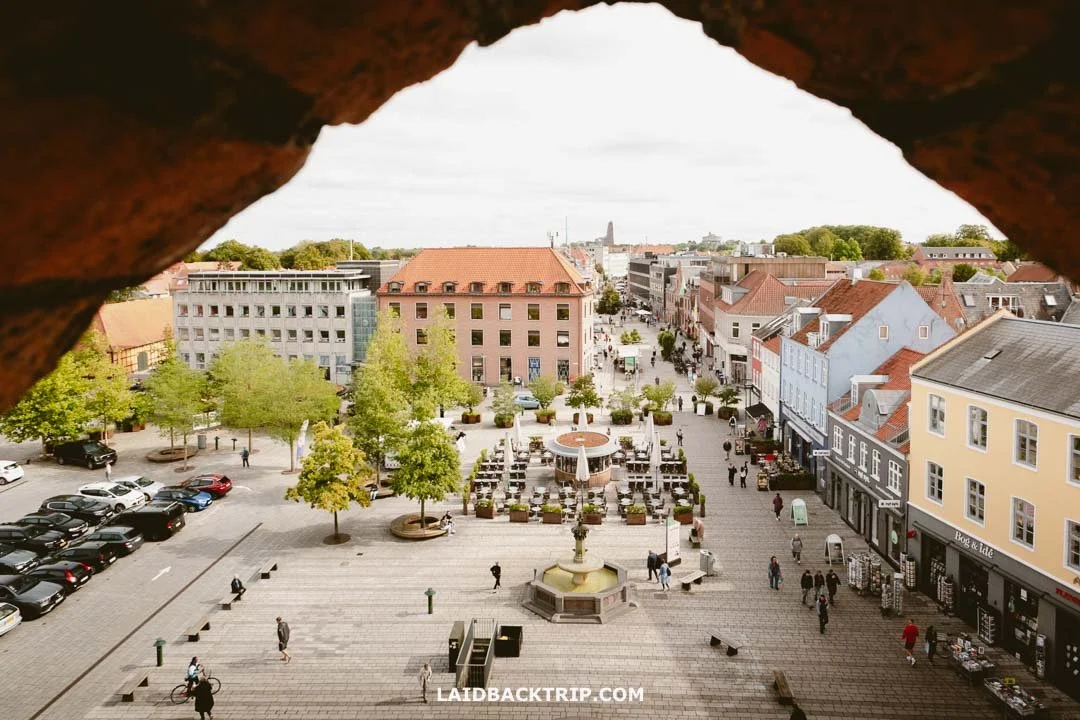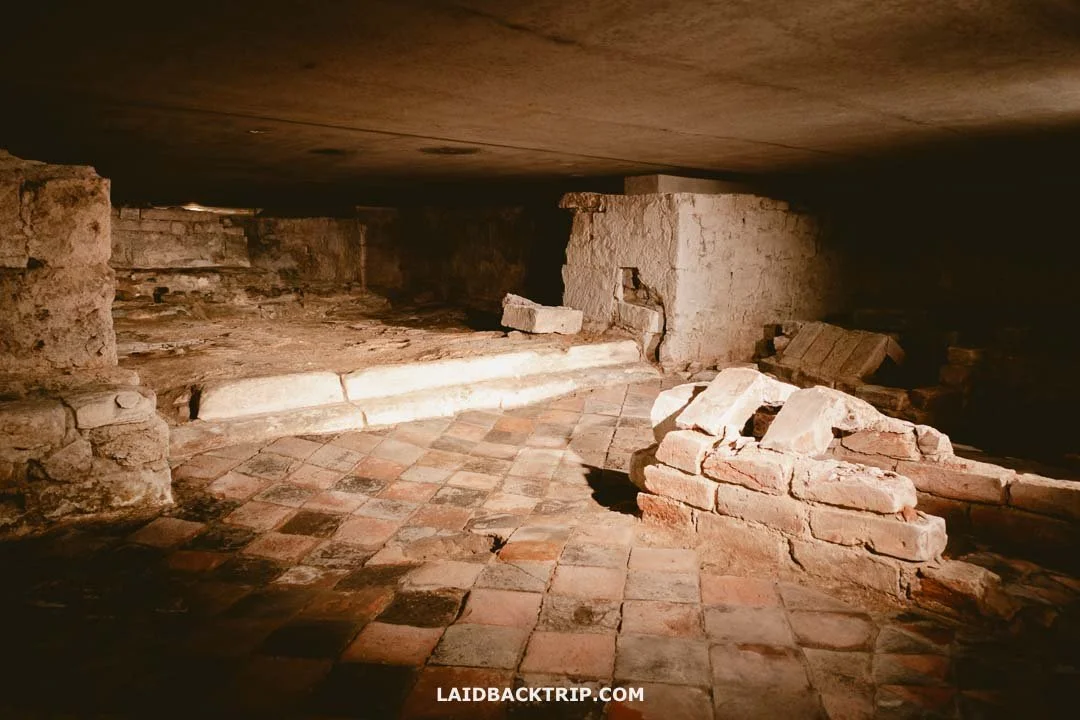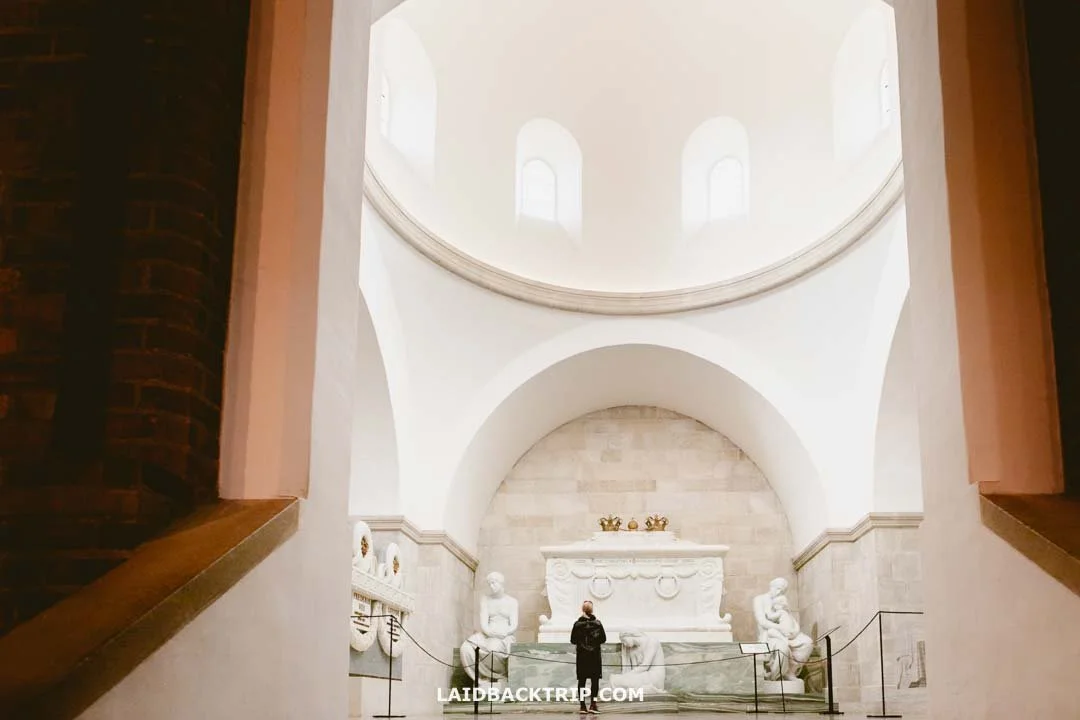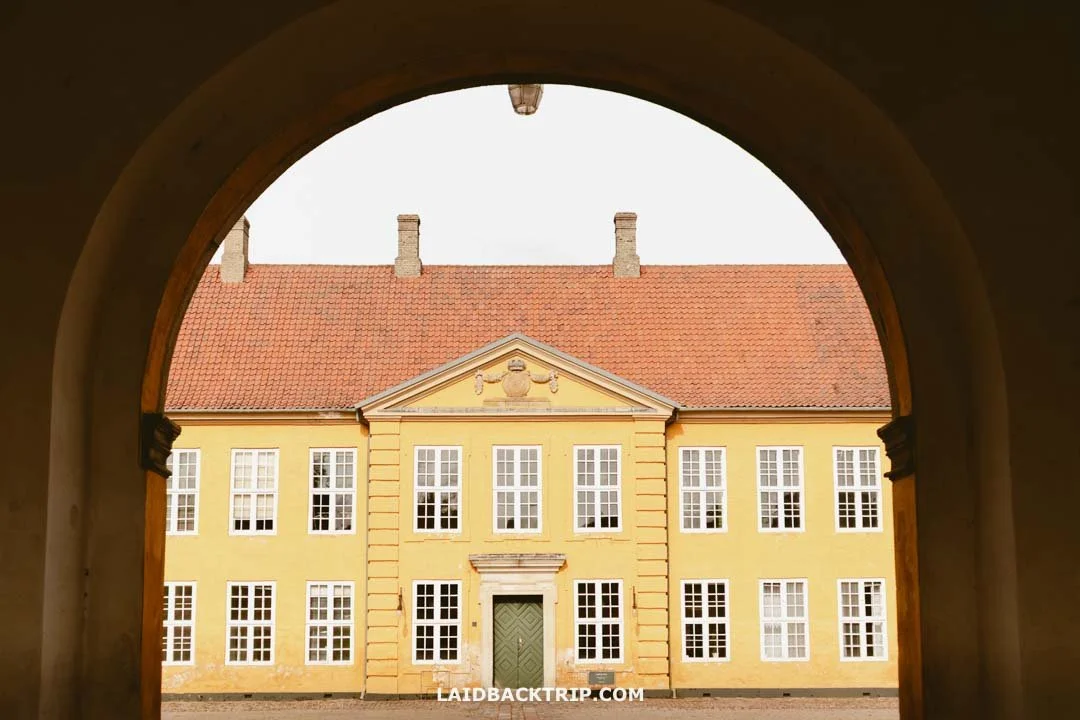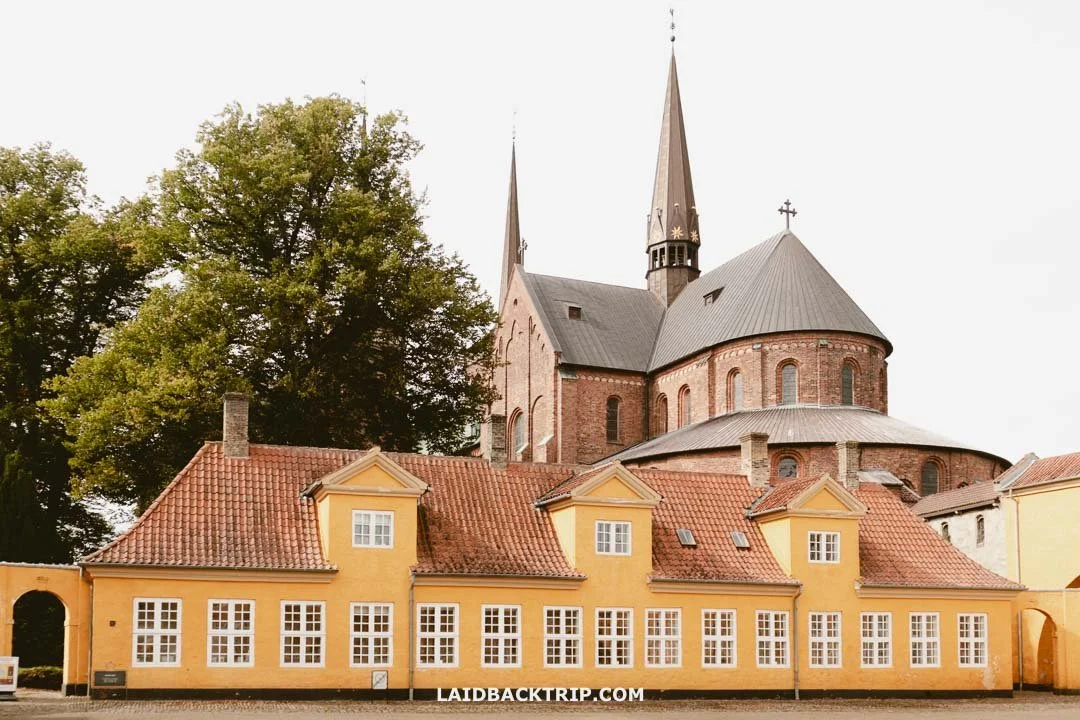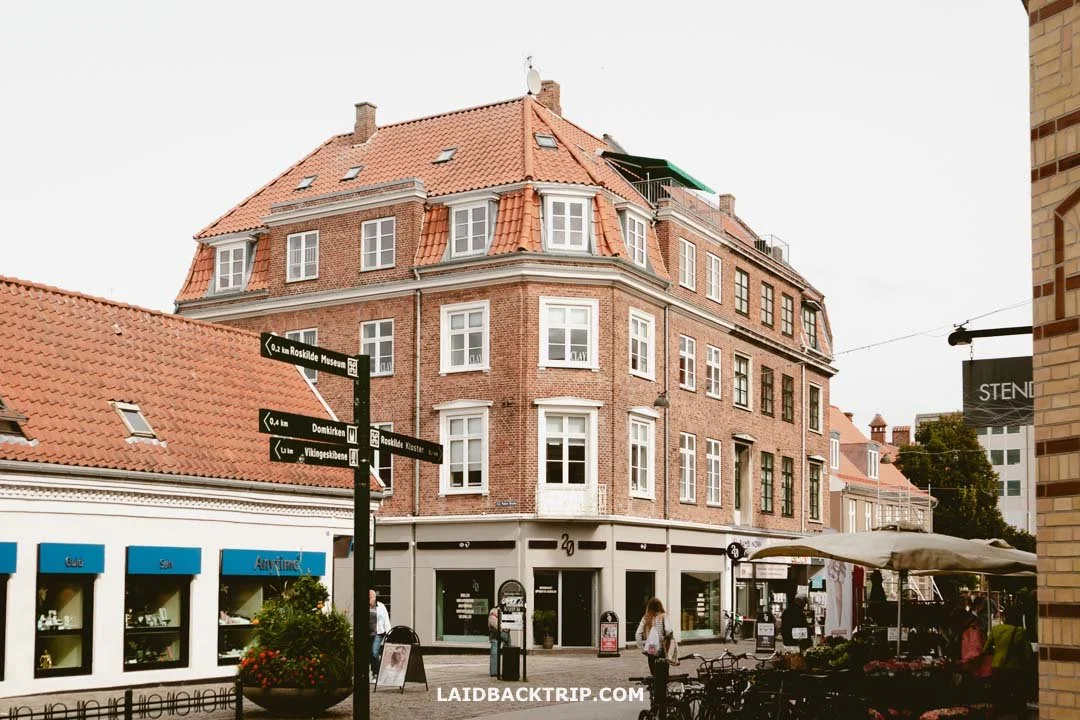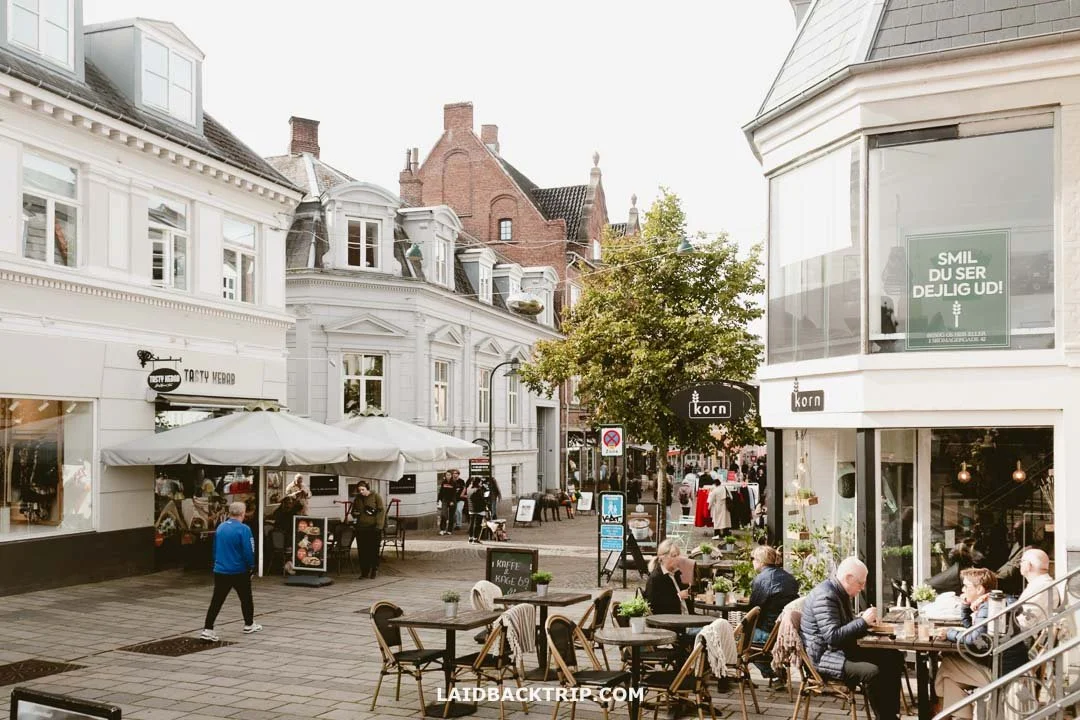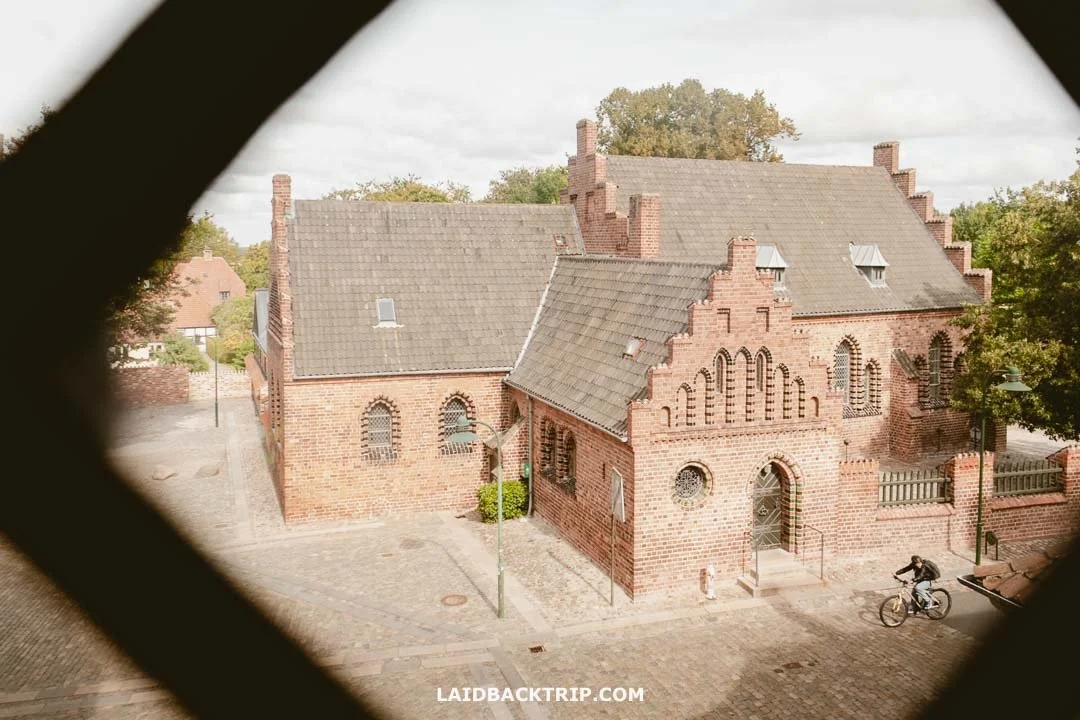How We Visited Roskilde
Roskilde makes for a great trip from Copenhagen, and it's easy to spend a few hours there.
As we found out, Roskilde definitely had more to offer than just the UNESCO cathedral.
Roskilde is a mid-sized town on the island of Zealand, about 35 kilometers west of Copenhagen. Sitting at the head of Roskilde Fjord, the town is mainly known for the UNESCO-listed Roskilde Cathedral and the Viking Ship Museum, two awesome attractions that let you dive deeper into Denmark's history. The mix of Viking and royal heritage really grabbed our attention, though we might be jumping ahead of ourselves here.
Truth be told, before our trip to Denmark, we knew very little about Roskilde and pretty much nothing about what there is to see and do. Honestly, we weren't even sure whether to include it in our itinerary at all. But when Lucie started listing Denmark's top attractions, she saw that the town appeared on most lists simply because it has a UNESCO site. That definitely piqued our interest, especially when I found out there's a museum with original Viking longships. Admittedly, that was more my thing. Lucie was more drawn to the royal history. After a quick chat, we decided to go for it. It turned out to be a great decision.
From a broader perspective, Roskilde was our last stop before reaching the capital. Up to that point, it had been a pretty spontaneous journey, full of unplanned stops and detours. So when we finally arrived in Roskilde, we weren't sure how much time to spend there. We decided to keep things flexible and just see how it went. So, if you're curious about what we saw in Roskilde and why we think it's worth a visit, keep on reading.
We definitely found Roskilde's Old Town more charming than we had expected.
What to See and Do in Roskilde
Our idea for visiting Roskilde was to see the UNESCO-listed cathedral, check out the Viking museum, and take a walk through the Old Town. And that's exactly what we ended up doing. I'm fairly sure that's what most people come for, although the town does offer a few more interesting places, like the pop and rock museum, an art gallery, and some old ruins underneath. So if you've got time to spare, there's definitely more to explore.
The main thing that brings visitors to town is Roskilde Cathedral and its UNESCO status.
Attraction-wise, Roskilde was the first place where we could have used the Copenhagen City Pass, if we'd bought it. We hadn't, mostly because it hadn't really crossed our minds that it also covers places outside the capital. And by the time we found out, it was already a bit too late. That said, both the Viking Ship Museum and Roskilde Cathedral are included in the pass, so make sure to do the math and see if it's worth it for your trip.
Visit the Viking Ship Museum Roskilde
We got to Roskilde in the morning and parked by the Viking Ship Museum, which is where we headed first. We'd already seen a few Viking sites like Lindholm Høje, the Jelling Monuments, and others, but of all of them, this was the one I was most excited to visit since it was said to have a few original longships.
The Viking Ship Museum is a must for history lovers.
Back in the 11th century, Roskilde was an important Viking hub thanks to its strategic location at the head of Roskilde Fjord, making it ideal for trade, defense, and seafaring. One of the most notable events in the fjord's history happened around the year 1070, when five Viking ships were deliberately sunk to stop enemy forces from reaching the town by sea. Almost 900 years later, those same ships were excavated and placed in the museum, which I'd been eager to visit ever since I first learned about them.
The Viking Museum is actually located on Roskilde Fjord, even if it might not seem like it.
The museum is split into two sections. Outside, there's a working shipyard where Viking ships are built using traditional techniques. The cool part is that this isn't just a display, it's an actual reconstruction site. The process is slow, though, and since we got there early, not much was happening.
The museum has a working Viking shipyard.
Still, we read some fascinating shipbuilding facts and saw several finished ships in the harbor, including the Sea Stallion from Glendalough (yes, the one in Ireland). A few more ships made by the museum were also docked nearby, so we explored those and enjoyed the view over Roskilde Fjord, which, by the way, is technically a fjord, just without the dramatic cliffs like we saw in Iceland's Westfjords or along New Zealand's Milford Track.
This is Sea Stallion, the reconstructed Skuldelev ship.
But honestly, that's not why we came here. What really drew us in was the indoor area, which is where we headed next. The main part of the museum is inside a large concrete building with huge windows and houses five original Viking ships, named Skuldelev 1 through 6. Why the fifth ship is called Skuldelev 6 has an interesting backstory, and we cover that in our detailed guide to Roskilde's Viking Ship Museum, where you'll also find everything you need to plan your visit, so make sure to read it.
Anyway, the ships were recovered from the bottom of Roskilde Fjord after nine centuries, so it's no surprise there aren't any fully intact Viking vessels inside. While that might sound disappointing, I think the museum did a fantastic job displaying them. The metal frameworks holding the wood fragments together actually look really cool.
The museum has five Skuldelev ships on display.
Earlier at Trelleborg Fortress, we saw a reconstructed traditional Viking longhouse. It was cool to compare it to the stone layouts, the only remains of the originals. Still, I was glad the ships here were preserved as they were found. Plus, the reconstructed Skuldelev 2 (aka the Sea Stallion) is docked outside if you want to see what these longships really looked like. After finishing the museum, we headed to Roskilde Cathedral.
Discover Roskilde's History at Sankt Laurentius
We then headed to Roskilde Cathedral, walking through Byparken, a lovely park that stretches between the harbor and the cathedral. When we arrived, the ticket clerk asked if we wanted to buy a combo ticket that includes the nearby Sankt Laurentius. We'd never heard of it before, but since he said it was interesting and less crowded, we decided to give it a shot. He also mentioned they were about to close soon, so if we wanted to go inside, we should visit it first. That's exactly what we did.
We walked through Byparken on our way to the Sankt Laurentius Church.
The entry fee to Sankt Laurentius is 50 DKK for adults, but we got the 85 DKK combo ticket that included Roskilde Cathedral, which was a pretty good deal. With tickets in hand, we walked roughly 200 meters, passing Byens Hus, a community center located in the old town hall building, until we arrived at the tower entrance in the square's southwest corner. Once inside, the ticket clerk checked our combo ticket and gave us a quick rundown of what to expect.
Laurentius Tower's staircase was definitely on the narrow side.
Sankt Laurentius is basically a ruined medieval church situated on, or more accurately, beneath, Roskilde's central square, Stændertorvet. It was destroyed in 1536 during the Reformation, leaving only the Laurentius Tower intact. The best part was that the tower was part of the visit, so we began by climbing to its top to enjoy the views. Historically, the tower served as a fire watch post, a city bell tower, and a jail. Today, it provides some of the best views of Roskilde town.
Climbing Laurentius Tower was totally worth it for the view.
After enjoying the views and learning all we could about the tower's history (the jail part was especially interesting), we headed down into the underground area to see the old ruins. The Sankt Laurentius ruins lie about eight meters below ground and date back to around the 1100s CE, when this church replaced an earlier wooden one.
The stairs leading to the underground church were super narrow too.
The new church was dedicated to St. Lawrence (Laurentius in Danish and Latin), a medieval saint who was grilled alive on a gridiron after giving the Church's wealth to the poor. Interestingly, we had read about him a few weeks earlier while hiking to Snezka, the highest point in Czechia, which also has a chapel dedicated to him.
The ruins were really interesting, even though they were small.
Anyway, the ruins were pretty interesting, especially knowing the whole history of Sankt Laurentius and realizing we were standing eight meters below the square. The underground area was quite small, so it didn't take long to explore. Besides the foundations, the most impressive part was the well-preserved tile floor made of red and black bricks.
Even after so many centuries, the tile floor is really well preserved.
One of the coolest details we learned is that the church's original ground plan is actually outlined on Stændertorvet, marked directly into the paving stones. We definitely missed this on the way there, but spotted it on the way back, already knowing what to look for.
Visit Roskilde Cathedral
After we returned from Sankt Laurentius Church, we spent the next two hours exploring Roskilde Cathedral. We'd seen various churches on this trip, from smaller medieval ones on Mon Island to a huge cathedral in Aarhus, and the red-brick Roskilde Cathedral was definitely the most impressive. Not just because of its size, but also its royal heritage and the overall atmosphere, which clearly showed it's one of the most important buildings in all of Denmark.
The front view of Roskilde Cathedral is really impressive.
The Gothic cathedral with Romanesque features was built between 1170 and 1280 CE as a center of worship for the Danish Church. Since the 15th century, it has served as the burial site for most Danish monarchs. This includes Christian IV, Frederick II, and about 40 other royals. It will also be the final resting place of Queen Margrethe II. In 1995, the cathedral was added to the UNESCO World Heritage list, and today it remains one of Denmark's most popular historical landmarks.
Roskilde Cathedral is a breathtaking Gothic masterpiece.
There was definitely a lot of Danish history here, with the royal side being the most prominent. We already mentioned a few monarchs buried here, but the most famous is Queen Margrete I, who united the Scandinavian countries under the Kalmar Union. Her tomb is right in the middle of the choir area, making it the easiest to spot. We also saw dozens of other tombs and took a quick look at the crypt below the cathedral.
The cathedral had plenty of tombs to check out.
After climbing the stairs to the first floor, we were treated to beautiful views revealing the cathedral's interior in all its grandeur. Surprisingly, the decoration was relatively modest, especially compared to other famous churches we'd visited recently, like St. Vitus Cathedral or Notre Dame. This floor also housed a small Cathedral Museum in a Gothic hall with plenty of history, Queen Margrete I's golden dress, and burial artifacts. Once we finished, we stepped outside and wandered around the cathedral to admire its stunning architecture from different perspectives.
You can see Queen Margrete I's golden dress in the cathedral museum up on the first floor.
See the Yellow Palace (Det Gule Palæ)
Interestingly enough, Roskilde doesn't have a traditional castle, but it does have a palace. Located right next to the cathedral, its yellow exterior and red-tiled roof make it easy to spot. This former Baroque mansion was used as a residence for the royal family when they came to Roskilde for major events like burials (since the cathedral is a burial place). It wasn't their permanent home, just a comfortable place to stay during these special visits.
One wing of the Yellow Palace is currently the residence of the Bishop of Roskilde.
Unfortunately, the Yellow Palace isn't open to visitors, apart from an art gallery in the adjacent building on the left as you pass through the main gate. It's open Tuesday to Sunday, 12 PM to 4 PM, so you can check it out if you're interested in art. We weren't at the time, so we just strolled around and admired the Baroque architecture from outside. We didn't mind since the next day we were heading to Copenhagen to explore the impressive Christiansborg Palace and charming Rosenborg Castle.
The palace is located right next to the cathedral.
Walk Around Roskilde's Old Town
Roskilde's Old Town wasn't as picturesque as the historic districts we saw in Ribe or Odense, but it definitely had its own charm. Compared to those two, it felt a bit less like a historic old town and included some newer buildings. As a result, it came across more as a regular town area rather than a tourist spot, like, for instance, the Old Town Square we have in Prague.
When we were there, Roskilde's town center had a really laid-back vibe.
For example, we noticed (well, it was hard to miss) that the main square has a big parking lot. While it's handy for locals and tourists driving into town, it does detract from the square's charm. It also felt a bit un-Danish, since they usually keep these areas car-free. But you get the point.
The Roskilde Museum focuses on the town's history.
Anyway, the Old Town was pretty small, so it didn't take much time to stroll through it, not counting the hours we spent inside the cathedral and Sankt Laurentius Church. Afterward, we slowly headed back to our car and then took a quick drive to Copenhagen, where we stayed for three days. If you're curious about exploring Roskilde beyond its main attractions, we've listed two other spots that might be worth checking out.
The main Algade Street was mostly car-free.
Learn About Danish Music in Ragnarock Museum
The first one is Ragnarock, also known as the museum of Danish pop and rock music. I have to admit, I know very little about Danish music, and I'm pretty sure I'm not the only one. At least Lucie's in the same boat as me. Ragnarock might have changed that, but after visiting three museums already, we weren't that keen on seeing another, so we decided to skip it.
I still remember visiting the National Music Center in Calgary a few years back, and it was pretty fun, so I imagine Ragnarock would be too. That said, from what we gathered, the experience really depends on how much you're into Danish music. By the way, Ragnarock is housed in one of Denmark's most unique buildings architecturally, and its flamboyant golden façade makes it one of Roskilde's best photo spots.
Travel Insurance
We never leave home without travel insurance that was designed to cover our expenses if something goes wrong during the trip. Travel insurance protects against theft, flight delays, injury, illness, cancellations, and much more. Travel smarter and safer!
World Nomads provides travel insurance for travelers to cover their trip essentials, including sports and adventure activities.
SafetyWing is affordable travel insurance for backpackers, long-term travelers, and digital nomads.
Take a Hike in Boserup Skov
The second place is Boserup Skov, a charming woodland area just west of Roskilde. It's the perfect spot to escape Roskilde's crowds (we visited the town on a weekday in September and there was pretty much no one around, though) and enjoy Zealand's nature.
With nice trails, forest, and sea coastline, it's popular with locals as a recreational area, but we suspect only a few international tourists like us make the trip since, honestly, it's just a forest. Since we focused more on nature during the first part of our trip while driving around Jutland, with its incredible beaches, vast wetlands, and stunning cliffs, we didn't visit this spot.
Where to Stay in Roskilde
We spent the night before on Zealand's coast, in the small village of Hojerup, one of the gateways to the Stevns Cliffs. It was just a simple B&B, but it had everything we needed after spending so many hours at the cliffs (we also visited the famous Mons Klint that same day). Since we visited Roskilde only for a few hours and ended our day in Copenhagen, we didn't actually stay overnight in Roskilde. And with the town being only a 30-minute car or train ride from the capital, we have a feeling most people do the same.
With a pretty loose itinerary, we briefly considered staying in Roskilde, but when we checked out the hotel options, we realized there were maybe three hotels in the whole town, not counting a few small apartments or B&Bs. While the main reason we moved on to Copenhagen was to save time, part of it was also that none of the hotels in Roskilde really caught our eye. That's not to say you won't find a decent place to stay, just that the selection is pretty limited, basically three hotels and a hostel.
Located on Algade Street, Four Points Flex Hotel is set in the historic Prindsen building.
Because we were looking for a place to stay basically the same morning, our choices were super limited. The only hotel with availability was Comwell Roskilde, which looked decent but was a bit outside the center. Roskilde Danhostel had rooms, but only with bunk beds. Four Points Flex, which is right in the middle of town, was fully booked, and the rooms left at Scandic Roskilde Park were a bit too expensive for our liking.
So we turned our attention to Copenhagen, where the hotel selection was much bigger, but being the weekend, most places were either booked or pretty pricey as well. We ended up choosing AC Hotel Bella Sky, which was awesome. It's not right in the city center, but with a metro station nearby, it was super convenient. If you're set on staying downtown, Motel One Copenhagen is a really popular option, and Wakeup Copenhagen is a good budget-friendly choice too.
How Long Does it Take to Visit Roskilde?
We spent about two hours in the cathedral, another two hours at the Viking Ship Museum, and around 45 minutes at Sankt Laurentius. On top of that, we probably spent another hour or so walking around the town and harbor. So all in all, it took us about six hours to see everything we wanted in Roskilde, without any major breaks. We did take a few short breaks here and there, like when we stopped at the main square just to soak in the views and atmosphere for a bit, and also had some muesli and bananas.
There are also some nice restaurants and cafés along Skomagergade Street.
We found Roskilde to be quite compact and very walkable, at least the central tourist area we focused on (Roskilde's suburbs weren't really on our list). The walk from the harbor area to the main square didn't take more than 15 minutes, and if we had kept going, we would have reached Ragnarock in another 20 (those two points were farthest from each other). So within roughly 30 minutes, you can easily cover all the main attractions in Roskilde on foot, which makes it a great spot for a quick visit.
How to Get to Roskilde
Located about 35 kilometers west of Copenhagen, Roskilde is easily accessible by car via Highway 21 or by train. Since we were road-tripping Denmark, driving to Roskilde was the natural choice for us. But of course, it's not the only way to get there. Taking the train might actually be the better option for you, as we'll explain in a moment.
By Car: Having a car is definitely a big plus if you're planning to explore more of Zealand beyond just Roskilde, especially if you're adding stops like Kronborg or Frederiksborg. As we already mentioned, we started our day in Hojerup, and honestly, getting between these places without a car would've been a hassle. If this sounds good, you can compare rental car prices here. It took us about 45 minutes to drive back to our hotel in Copenhagen, which felt like a lot given that we only covered 38 kilometers.
By Train: So that brings us to the point that if you're already in Copenhagen and want to visit Roskilde just for a quick trip, then it's probably better to take the train instead. The ride between Copenhagen and Roskilde takes about 20–25 minutes, depending on the type of train. It's true that you'll need to walk another 20 minutes from Copenhagen's main station, København H, to reach the Nyhavn area (which is the very center of the city), but even with that in mind, we think the train is the better option. Roskilde's train station is located less than a kilometer from the cathedral.
Roskilde Tours: Keep in mind that Roskilde is pretty popular and features a UNESCO World Heritage site, so it's often included in many tour packages. This gives you another option to visit the town without planning too much. Many of the popular Roskilde tours also stop at Frederiksborg and Kronborg, making it a handy way to check out Zealand's highlights quickly.
Roskilde is frequently included as a stop on guided tours.
Parking in Roskilde
Because we were driving to Roskilde, I had to figure out where we could park. I'd come to expect paid parking in almost every city, so I didn't hold out much hope. But a quick search showed I was wrong. There was free parking right by the Viking Ship Museum. It was around a 15-minute walk to the Old Town, which was totally fine since we wanted to check out the museum too.
I was a little worried the parking would be full when we got there (even though it was still mid-morning), but I was wrong. We easily found a spot since it was fairly empty. However, by the time we left in the afternoon, it was completely full, and people had to wait for spots, something we also experienced later at the Louisiana Modern Museum of Art.
We found that parking in Danish cities like Aarhus or Aalborg was often pretty expensive, at least in garages near the center, which isn't really surprising. So being able to park for free in Roskilde was a welcome change.
Obviously, I had a few backup parking spots saved on my map just in case this one was full. The most convenient options seemed to be Maglekildevej Parkering or Schmeltz Plads Parkering. Both are pretty central, about a five-minute walk from the cathedral. You get the first two hours free, and after that, you have to pay. There is also parking available at Stændertorvet.
Travel Resources
Here you can find links to all the travel resources we use and which you might find helpful when planning your next holiday.
Accommodation: When looking for accommodation, we usually search hotels via Booking.com or Hostelworld.
Tours: Although we love to travel independently, some places are better to visit with a guided tour.
We prefer GetYourGuide for its easy-to-use interface and solid reputation. Another great alternative is Viator.
Rental Cars: When going on a road trip, we always use Rentalcars.com, a reliable site for booking a rental car in advance.
Flight Tickets: When looking for flight tickets, you can search Skyscanner to find the best price.
Travel Insurance: World Nomads and SafetyWing cover against risks of travel.
